The most profitable farms are those that are able to maximise output from the resources within the farm gate.
At CAFRE’s beef and sheep centre at Greenmount campus in Antrim, the aim of technology transfer projects is to demonstrate efficient and sustainable production systems, both to local farmers and also to students studying at the college.
The Greenmount farm carries a lowland sheep flock of approximately 200 ewes, grazed across a seven-paddock system with a total area of 12.6ha.
It means stocking rate is high, at around the 16 ewes/ha mark. Minimal concentrate is offered to ewes, and lambs are not creep fed.
Fertiliser input is moderate, at around 120kg N/ha. After the main grazing season, surplus grass available across the rest of the beef and sheep centre is utilised for winter grazing.
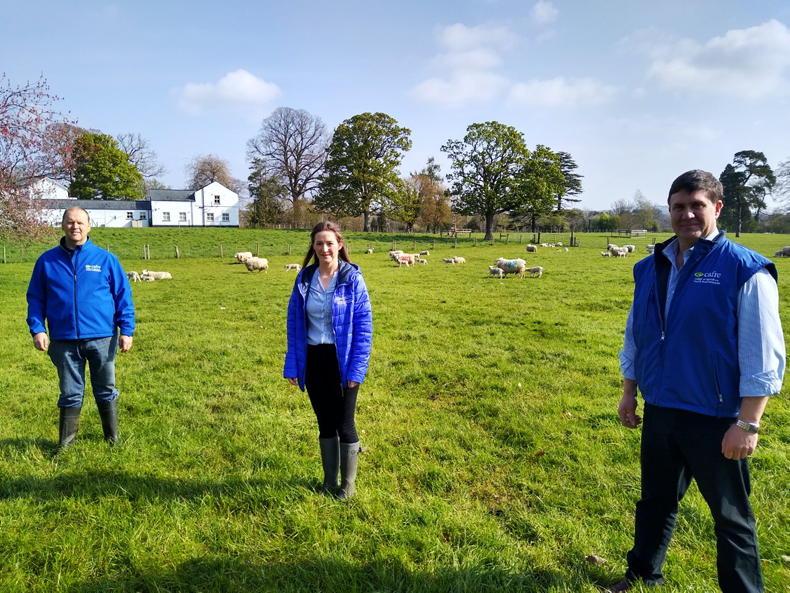
CAFRE sheep technologist, Dr Eileen McCloskey with CAFRE farm manager Michael Graham (right) and assistant farm manager Stephen Clyde.
“In a successful paddock system, it’s all about getting the basics right, starting with soil testing and ensuring pH remains above 6, and phosphorus and potassium indexes are in the range of 2 to 3.
“We want to demonstrate a system on the farm that is easily managed and persistent – we can’t demonstrate something to farmers that doesn’t last,” states CAFRE sheep technologist Dr Eileen McCloskey.
The lowland ewes are out of Lleyn rams put to Blackface Texel crosses at the 1,000ha Greenmount hill farm at Glenwherry, situated midway between Antrim and Ballymena. In 2021, out of 214 ewes scanned, there are 362 lambs at grass (see Table 1).
Ewe lambs for breeding are initially selected from the hill farm based on performance records.
“When it comes to selecting ewe lambs, it has to be a twin, with above average growth rate and of course, it has to be physically correct. We might initially pick out 80 ewe lambs and end up with 50 hoggets that actually go to the ram,” explains Greenmount farm manager Michael Graham.
Both he and Eileen are strong advocates of having and utilising your own records to select sheep, and not getting too focused on breeds.
“As far as I’m concerned, these are white-faced ewes that suit the grass-based system we are demonstrating. It’s not about a particular breed,” says Eileen.
Ewes are all put to Meatlinc rams, a breed originally created in England in the 1960s as a five-way cross involving Suffolk and Dorset, along with three French breeds – Charollais, Ile de France and Berrichon.
Rams are all performance recorded, and the breed is marketed under the strapline Forage-Based Genetic Selection. Rams are all sold direct off-farm at set prices. CAFRE buys rams off the only Meatlinc breeder in Northern Ireland – Francis Connon, based in Ballymena.
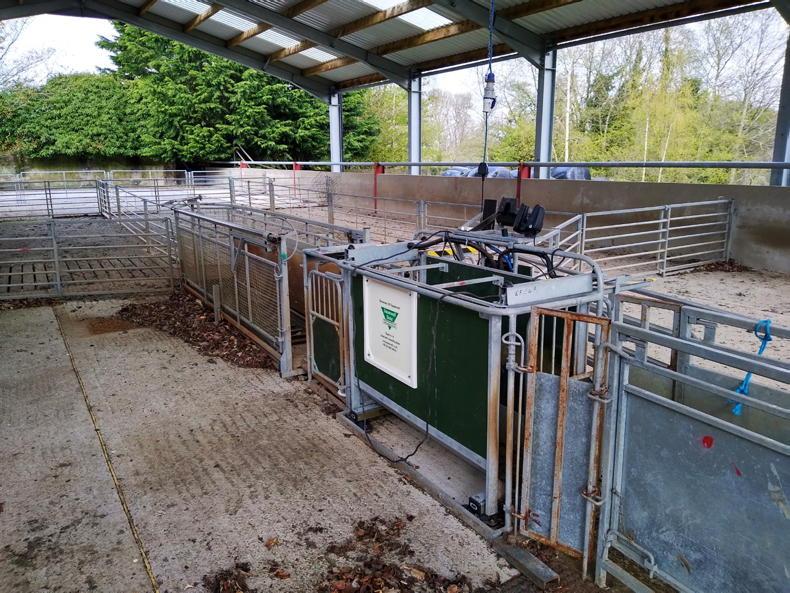
The sheep handling unit at the CAFRE Beef and Sheep Center at Greenmount.
“We know it is difficult to find performance recorded, grass-fed rams which have not been pushed. But they are out there, and if more farmers tell breeders that is what they want, more rams will become available,” says Michael Graham.
The aim on the farm is to have 80% of lambs slaughtered by 1 October. As shown in Table 2, on average each lamb is on the farm for 151 days.
Measure and record
flock performance
To operate an efficient sheep flock, you must record performance and use that information as the basis for good decision-making, emphasises Dr Eileen McCloskey.
Each time lambs are in the yard, they are run across an electronic weighbridge. “Growth rate is king in a system like this. There is kit out there for everybody. Too many farmers will consider spending £20,000 (€23,000) on a jeep, or £10,000 (€11,500) on a quad, but won’t spend £2,000 (€2,300) on a weighbridge,” she maintains.
She argues that by selecting ewe lambs above the average for breeding, it will come through in resultant lambs, and the faster lambs go off the farm, the more grass there is for ewes later in season, which ultimately will lower costs. But, she also advocates recording other information, particularly around lambing time.
All ewe lambs retained are twins. Any problem ewes are identified for culling using farm software – each time the ewe passes through the handling system, a reminder pops up on the system.
“If I’m getting lambs to grow quicker and getting an extra lamb for every 10 ewes because I am recording information and weighing regularly, the weighbridge and handling system will quickly pay for itself,” maintains Michael Graham.
“If you keep passengers, you will soon end up with a flock of ordinary ewes. We can only keep around 200 ewes, so there is no room for any that cause problems or don’t perform,” he adds.
Diet based on
grazed grass
The Greenmount sheep flock is predominantly March-lambing, with ewes and lambs initially turned out in small groups, and, once growth picks up, the flock is brought together and grazed across the seven paddocks as one mob. Grass is measured weekly, with any surplus across the season taken out for silage. In 2020, the paddocks grew an average of 11.2t grass dry matter per hectare.
The swards are a mixture of old permanent pasture and some land that was recently reseeded. Like a lot of farms in NI, Greenmount has found clover growth to be variable depending on year and soil type.
“We have tried sowing it out with grass and stitching it in, but it has never really grown that well on this farm,” maintains assistant farm manager Stephen Clyde.
With a lot of interest in mixed species swards, is that an option going forward?
“There is very little research carried out locally, which would be beneficial to inform decisions around mix selection, establishment and management. We are currently reviewing research carried out on mixed species swards in Britain and Ireland, and plan to establish a project at CAFRE. The ability to cut anthelmintic use might be where the main benefits are for us,” says Dr Eileen McCloskey.
She has some concerns that if you had some paddocks as mixed species and some in permanent pasture, the inconsistent diet might have a negative impact on animal performance. “This is something we need to investigate,” says Eileen.
The most profitable farms are those that are able to maximise output from the resources within the farm gate.
At CAFRE’s beef and sheep centre at Greenmount campus in Antrim, the aim of technology transfer projects is to demonstrate efficient and sustainable production systems, both to local farmers and also to students studying at the college.
The Greenmount farm carries a lowland sheep flock of approximately 200 ewes, grazed across a seven-paddock system with a total area of 12.6ha.
It means stocking rate is high, at around the 16 ewes/ha mark. Minimal concentrate is offered to ewes, and lambs are not creep fed.
Fertiliser input is moderate, at around 120kg N/ha. After the main grazing season, surplus grass available across the rest of the beef and sheep centre is utilised for winter grazing.

CAFRE sheep technologist, Dr Eileen McCloskey with CAFRE farm manager Michael Graham (right) and assistant farm manager Stephen Clyde.
“In a successful paddock system, it’s all about getting the basics right, starting with soil testing and ensuring pH remains above 6, and phosphorus and potassium indexes are in the range of 2 to 3.
“We want to demonstrate a system on the farm that is easily managed and persistent – we can’t demonstrate something to farmers that doesn’t last,” states CAFRE sheep technologist Dr Eileen McCloskey.
The lowland ewes are out of Lleyn rams put to Blackface Texel crosses at the 1,000ha Greenmount hill farm at Glenwherry, situated midway between Antrim and Ballymena. In 2021, out of 214 ewes scanned, there are 362 lambs at grass (see Table 1).
Ewe lambs for breeding are initially selected from the hill farm based on performance records.
“When it comes to selecting ewe lambs, it has to be a twin, with above average growth rate and of course, it has to be physically correct. We might initially pick out 80 ewe lambs and end up with 50 hoggets that actually go to the ram,” explains Greenmount farm manager Michael Graham.
Both he and Eileen are strong advocates of having and utilising your own records to select sheep, and not getting too focused on breeds.
“As far as I’m concerned, these are white-faced ewes that suit the grass-based system we are demonstrating. It’s not about a particular breed,” says Eileen.
Ewes are all put to Meatlinc rams, a breed originally created in England in the 1960s as a five-way cross involving Suffolk and Dorset, along with three French breeds – Charollais, Ile de France and Berrichon.
Rams are all performance recorded, and the breed is marketed under the strapline Forage-Based Genetic Selection. Rams are all sold direct off-farm at set prices. CAFRE buys rams off the only Meatlinc breeder in Northern Ireland – Francis Connon, based in Ballymena.

The sheep handling unit at the CAFRE Beef and Sheep Center at Greenmount.
“We know it is difficult to find performance recorded, grass-fed rams which have not been pushed. But they are out there, and if more farmers tell breeders that is what they want, more rams will become available,” says Michael Graham.
The aim on the farm is to have 80% of lambs slaughtered by 1 October. As shown in Table 2, on average each lamb is on the farm for 151 days.
Measure and record
flock performance
To operate an efficient sheep flock, you must record performance and use that information as the basis for good decision-making, emphasises Dr Eileen McCloskey.
Each time lambs are in the yard, they are run across an electronic weighbridge. “Growth rate is king in a system like this. There is kit out there for everybody. Too many farmers will consider spending £20,000 (€23,000) on a jeep, or £10,000 (€11,500) on a quad, but won’t spend £2,000 (€2,300) on a weighbridge,” she maintains.
She argues that by selecting ewe lambs above the average for breeding, it will come through in resultant lambs, and the faster lambs go off the farm, the more grass there is for ewes later in season, which ultimately will lower costs. But, she also advocates recording other information, particularly around lambing time.
All ewe lambs retained are twins. Any problem ewes are identified for culling using farm software – each time the ewe passes through the handling system, a reminder pops up on the system.
“If I’m getting lambs to grow quicker and getting an extra lamb for every 10 ewes because I am recording information and weighing regularly, the weighbridge and handling system will quickly pay for itself,” maintains Michael Graham.
“If you keep passengers, you will soon end up with a flock of ordinary ewes. We can only keep around 200 ewes, so there is no room for any that cause problems or don’t perform,” he adds.
Diet based on
grazed grass
The Greenmount sheep flock is predominantly March-lambing, with ewes and lambs initially turned out in small groups, and, once growth picks up, the flock is brought together and grazed across the seven paddocks as one mob. Grass is measured weekly, with any surplus across the season taken out for silage. In 2020, the paddocks grew an average of 11.2t grass dry matter per hectare.
The swards are a mixture of old permanent pasture and some land that was recently reseeded. Like a lot of farms in NI, Greenmount has found clover growth to be variable depending on year and soil type.
“We have tried sowing it out with grass and stitching it in, but it has never really grown that well on this farm,” maintains assistant farm manager Stephen Clyde.
With a lot of interest in mixed species swards, is that an option going forward?
“There is very little research carried out locally, which would be beneficial to inform decisions around mix selection, establishment and management. We are currently reviewing research carried out on mixed species swards in Britain and Ireland, and plan to establish a project at CAFRE. The ability to cut anthelmintic use might be where the main benefits are for us,” says Dr Eileen McCloskey.
She has some concerns that if you had some paddocks as mixed species and some in permanent pasture, the inconsistent diet might have a negative impact on animal performance. “This is something we need to investigate,” says Eileen.






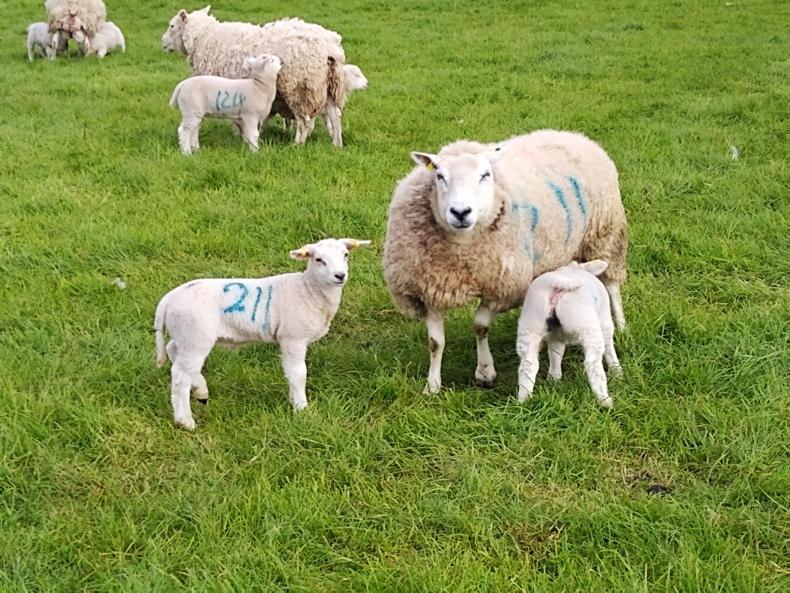
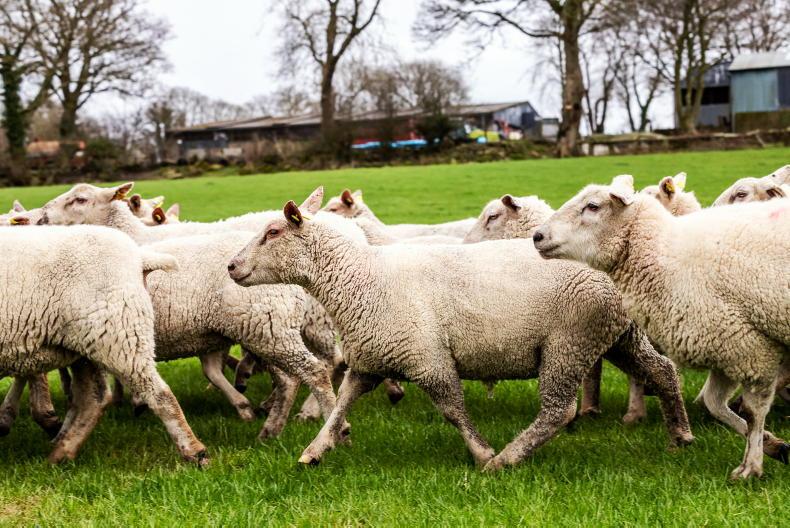
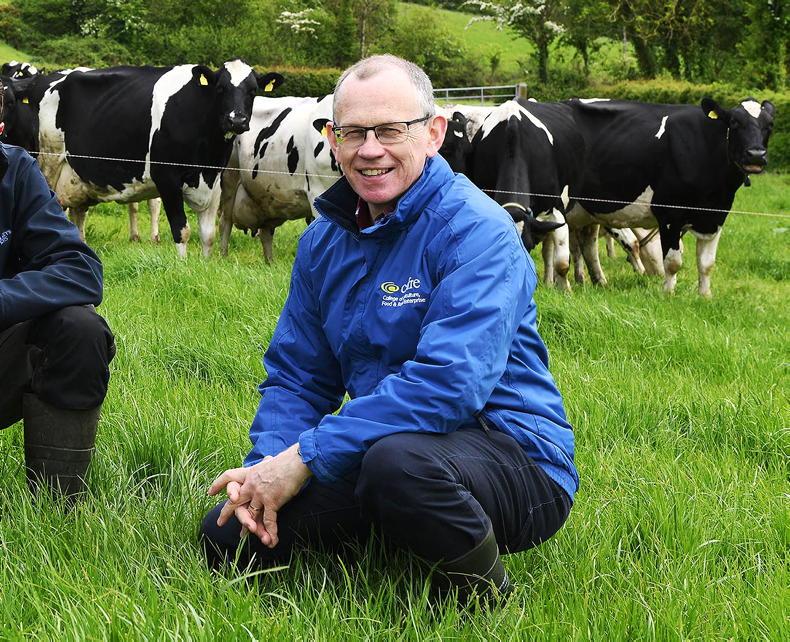
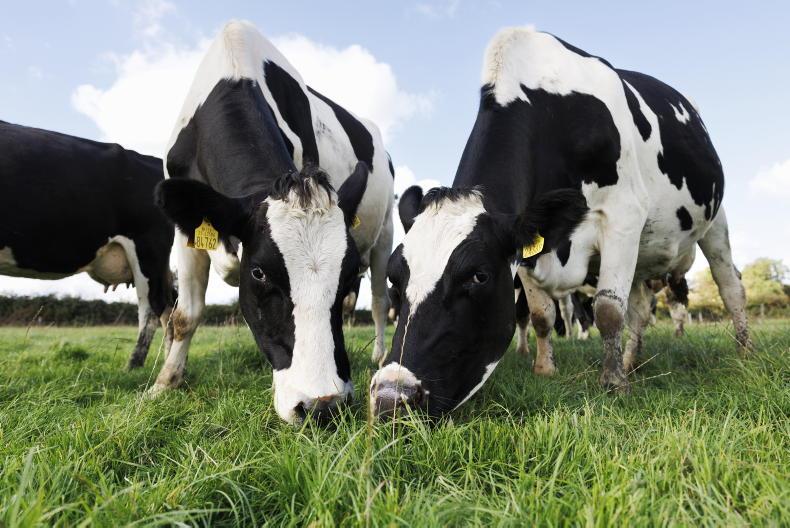
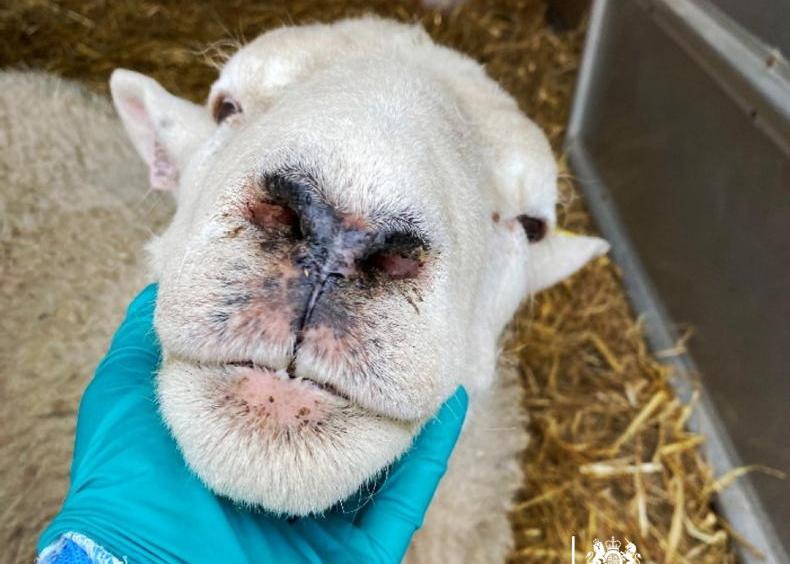
SHARING OPTIONS